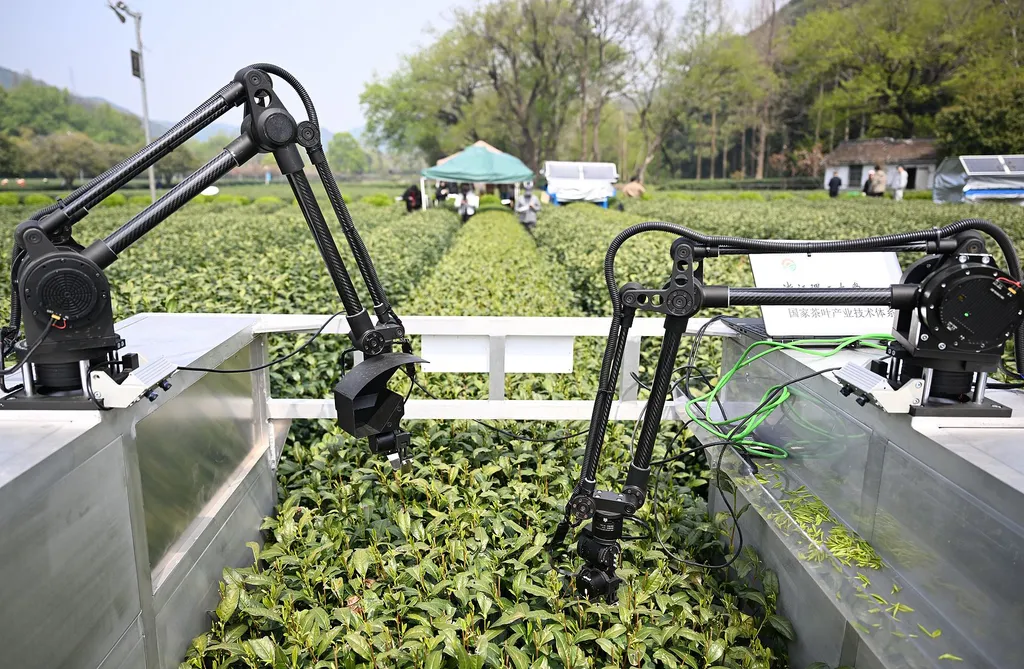In the heart of Heilongjiang, China, a team of researchers led by Yuyang Ren from the College of Information and Electrical Engineering at Heilongjiang Bayi Agricultural University is revolutionizing precision agriculture with a novel approach to autonomous steering in soybean fields. Their recent study, published in *Frontiers in Plant Science* (which translates to *Frontiers in Agricultural Science*), introduces a dynamic navigation line visualization method that promises to enhance the accuracy of autopilot systems in soybean headland areas.
The challenge of autonomous steering in soybean fields, particularly during the critical V3–V8 growth stages, has long been a hurdle for the agricultural industry. Traditional methods often fall short in accuracy, leading to inefficiencies and increased operational costs. Ren and his team have addressed this issue head-on by developing a method that combines deep learning and feature detection fusion, significantly improving path planning capabilities for agricultural machinery.
At the core of this innovation is the improved lightweight YOLO-PFL model, which boasts impressive metrics: a precision of 94.100%, a recall of 92.700%, and an [email protected] of 95.600%. “This model is not only highly accurate but also efficient, with just 1.974 M parameters and 4.816 GFLOPs, making it ideal for embedded deployment in agricultural machines,” explains Ren. The model’s efficiency is crucial for real-time applications, ensuring that the steering paths generated are both timely and precise.
The researchers also built a 3D positioning model using binocular stereo vision, which controls distance errors within specific ranges, ensuring reliable depth perception. This is complemented by an interference-resistant crop row centerline extraction method. By converting images to the HSV color space and applying morphological operations, the team enhances contours and extracts feature points. These points are then fitted using the least squares method, solving issues like centerline offsets caused by straws, weeds, illumination changes, and other environmental factors.
One of the most compelling aspects of this research is the dynamic projection of navigation lines. By fusing 3D positioning and orientation parameters, the system generates circular arc paths in the world coordinate system, which are then dynamically projected onto the image plane. This visualization provides a clear navigation reference for automatic wheeled machines, significantly improving their operational accuracy.
The implications of this research are far-reaching. For the agricultural sector, it offers a pathway to more efficient and precise farming practices, reducing the need for manual intervention and lowering operational costs. “This technology supports the advancement of intelligent precision agriculture equipment, paving the way for smarter, more sustainable farming,” says Ren.
Beyond agriculture, the principles of this research could have broader applications in the energy sector, particularly in the maintenance and operation of renewable energy installations. For instance, autonomous systems equipped with similar navigation capabilities could enhance the efficiency of solar panel cleaning or wind turbine inspections, ensuring optimal performance and reducing downtime.
As the world moves towards more sustainable and technologically advanced practices, innovations like those developed by Ren and his team are set to play a pivotal role. By pushing the boundaries of what is possible in autonomous navigation, they are not only shaping the future of agriculture but also inspiring advancements across various industries.
This research, published in *Frontiers in Plant Science*, marks a significant step forward in the field of precision agriculture. It underscores the potential of combining deep learning with traditional feature detection methods to solve real-world problems. As the technology continues to evolve, we can expect to see even more sophisticated applications, driving efficiency and sustainability across multiple sectors.

